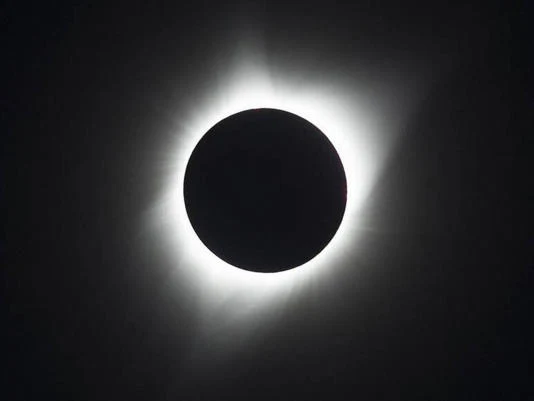The live broadcast "Eclipse Across America" is scheduled for Monday, April 8, starting at 2 p.m.
ET. Viewers can tune in on Live, National Geographic Channel, Nat Geo WILD, Disney+, Hulu, and network social media platforms.
The upcoming total solar eclipse on April 8, 2024, is a celestial event that has long captivated sky-watchers and scientists alike.
This eclipse will cast parts of the contiguous United States into twilight as the moon passes between the sun and Earth, briefly obscuring the sun. The path of totality, where the sun will be completely obscured, will start over San Antonio, Texas, and move across several states, including Oklahoma, Arkansas, Missouri, Illinois, Kentucky, Indiana, Ohio, Pennsylvania, New York, Vermont, New Hampshire, and Maine, passing just north of Bangor. Small parts of Tennessee and Michigan will also experience totality, according to NASA. To witness the total eclipse, viewers must be within the 115-mile-wide path of totality.
Solar eclipses have been observed and interpreted in various ways throughout history. The earliest recorded eclipse observation dates back to Nov. 30, 3340 B.C.E., at Loughcrew Megalithic Monument in County Meath, Ireland. Paul Griffin, an "archaeoastronomer," discovered a series of overlapping circular rock carvings, or petroglyphs, that seem to depict a partial eclipse. Griffin hypothesizes that the nearby charred human remains of nearly 50 individuals could be linked to a Neolithic-era human sacrifice ritual possibly connected to the eclipse.
In Anyang, China, eclipse records were found carved into tortoiseshell fragments, known as "oracle bones," around 1200 B.C.E.
These records described the sun as being devoured, suggesting a belief that celestial dragons were attacking and consuming the sun. Similar interpretations of eclipses as omens or celestial disturbances are found in various cultures worldwide.
Scientific understanding of eclipses has evolved over time. Aryabhatta, an ancient Indian mathematician and astronomer, is credited with recording early observations about the true nature of eclipses. In modern times, Albert Einstein's general theory of relativity, published in 1915, was validated during a solar eclipse in 1919. Observations of stars near the sun during the eclipse confirmed Einstein's prediction that gravity could bend light.
Recent eclipses, such as the one in 2017 that swept across the contiguous U.S., have provided scientists with valuable opportunities to study the sun, moon, and Earth. NASA's upcoming Atmospheric Perturbations around Eclipse Path (APEP) mission during the April 8 eclipse will launch three suborbital rockets to study how the sudden decrease in sunlight affects the upper atmosphere. Additionally, students from Virginia Tech will launch high-altitude scientific weather balloons along the eclipse path as part of the National Eclipse Ballooning Project for NASA.


